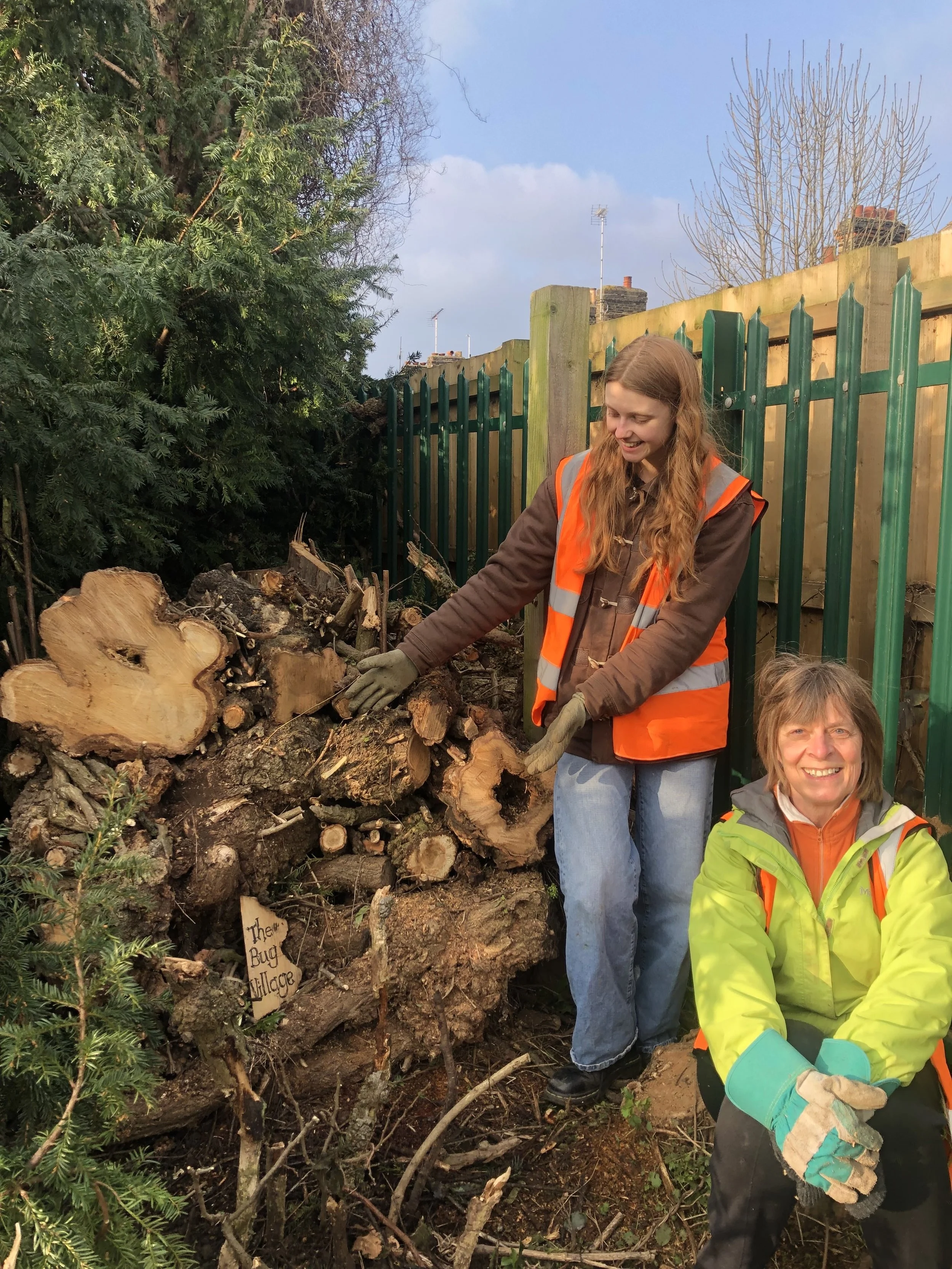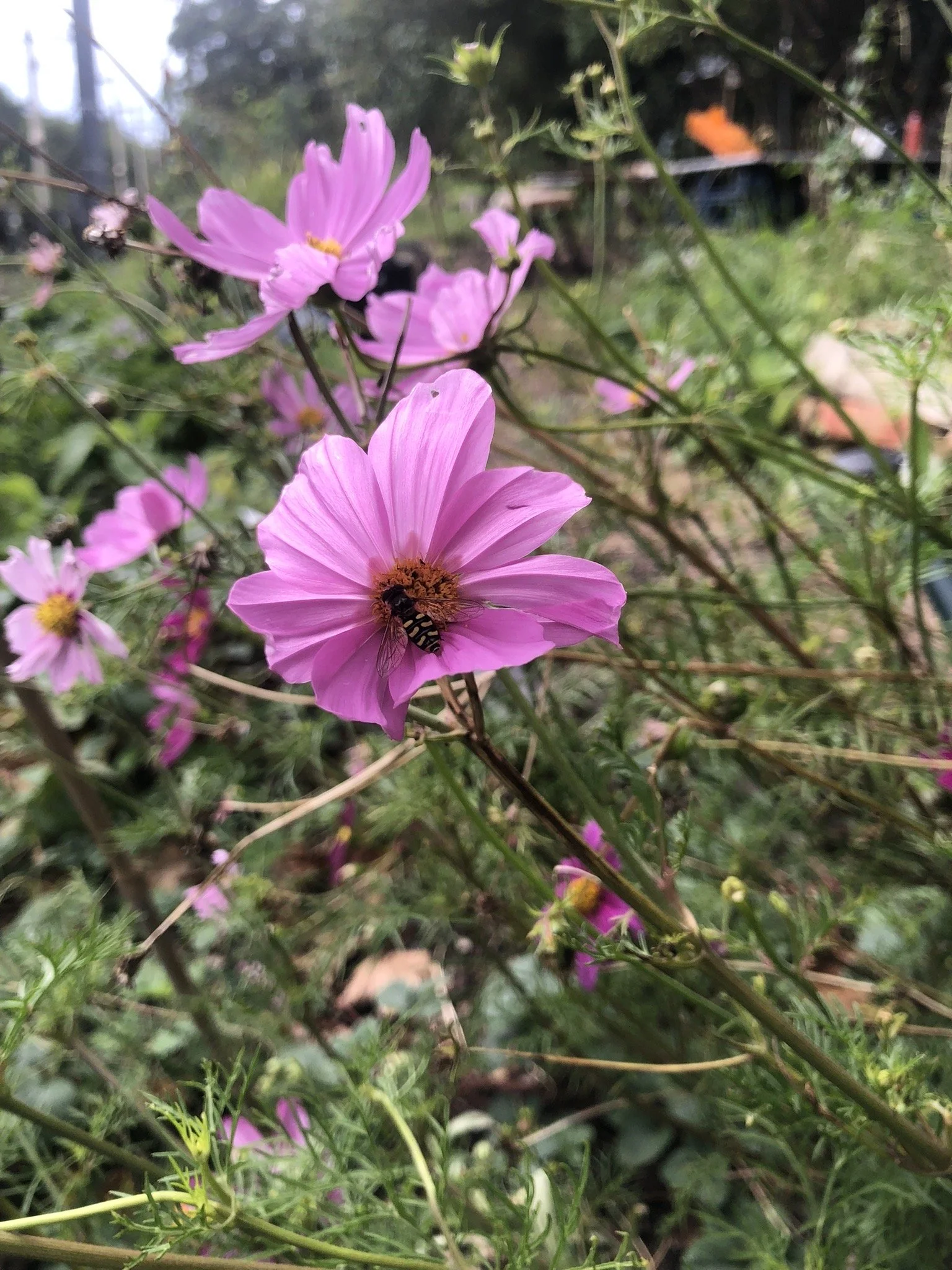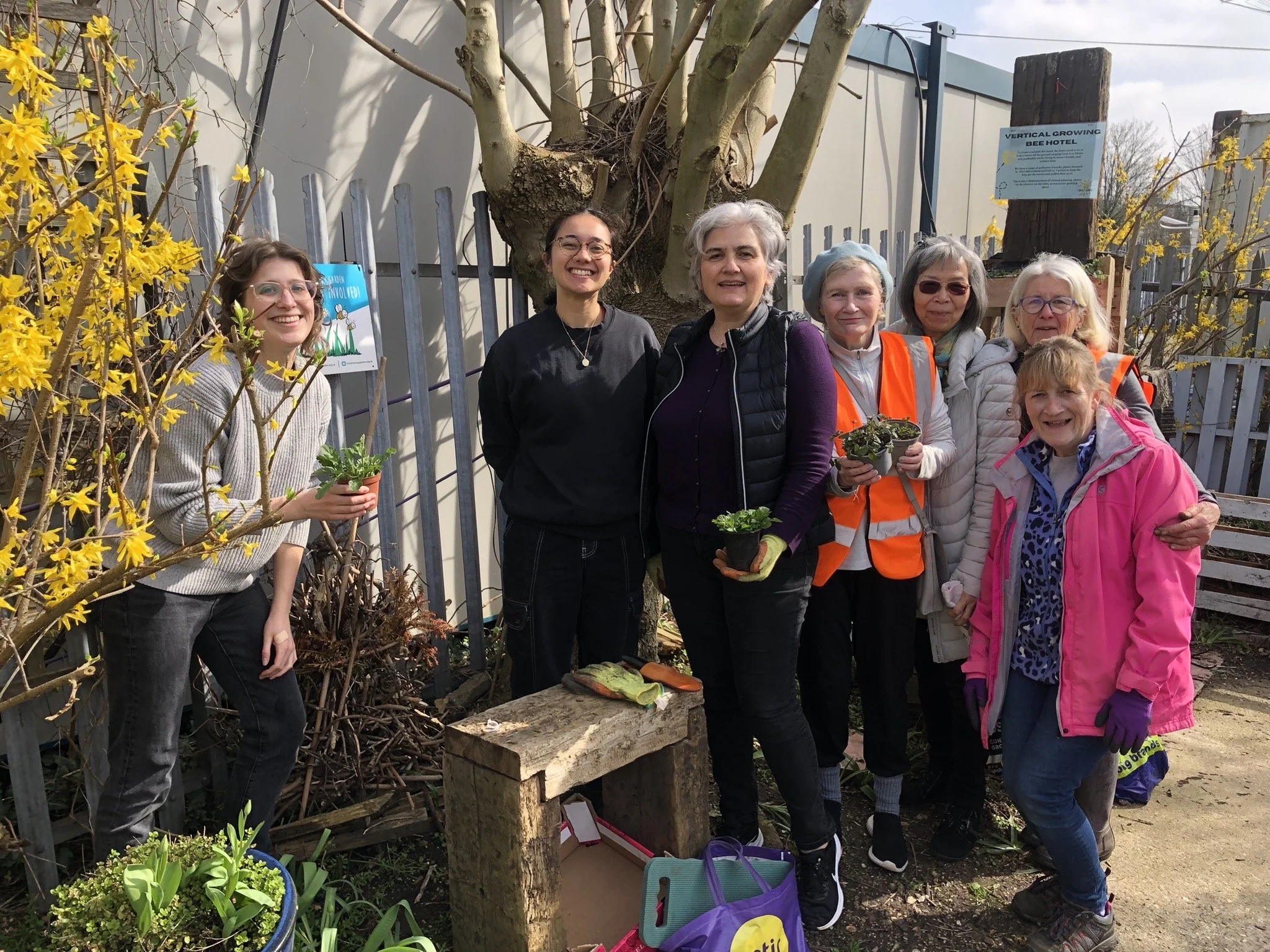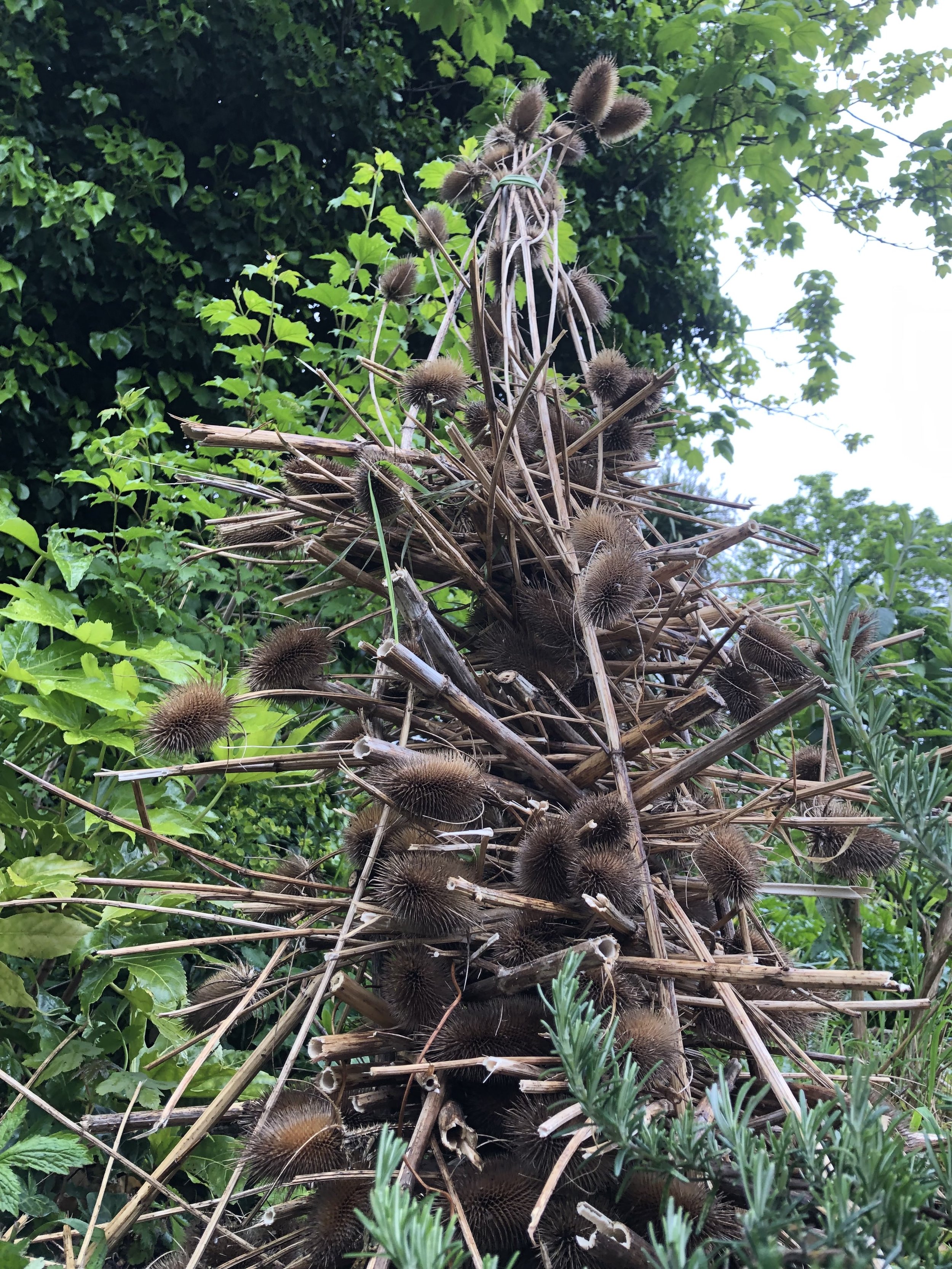Bugging Out Our Network
Ellen, Energy Garden’s Biodiversity Lead, is here to bug you about some relatively big bug developments in our gardens.
Energy Garden is rolling out a new suite of animal habitats across our network this year. With increased focus on maximising the biodiversity benefits our green spaces can provide, we are filling spaces in our gardens with bug huts, bird boxes, gabions, hibernaculums and more.
Our aim is to create unique animal habitat features using as many materials from within the garden as possible. This has led to the construction of many “Bug Huts” which are built from sticks and dried cuttings from around the garden to create woody towers filled with lots of nooks and crannies for insects and other creepy crawlies to inhabit.
Some of our volunteer groups have been keen to come up with unique names for these new habitat features. Finchley Central Station’s group decided on “Bug Central”, Bush Hill Park Station’s volunteers chose “Bug Village” owing to the massive size of the log pile creating a village sized habitat, Brockley Station’s group picked “Bug Barn at Brockley”, and Rectory Road Station’s group dubbed theirs the “Teasel Tower” since it is entirely made of teasel cuttings.
Even though most have just opened for business, we are already noticing a plethora of visitors. Ladybirds, woodlice, garden snails, spiders and more have been seen crawling around. These habitats will be particularly useful for animals in the fall and winter as they will provide shelter and warmth as they wait out the chilly weather.
If you find yourself in an Energy Garden, look to see if you can spot any of these new features and their residents. Be sure to join Energy Garden’s Biodiversity 2024 project on iNaturalist and upload your observations. This way Energy Garden can have a richer understanding of the biodiversity in our gardens, and you can also contribute towards wider citizen science initiatives.
Biodiversity Week is just around the corner with six events scheduled from 15 to 22 May across our network of gardens. You can join us for a mixture of citizen science, planting, and animal habitat creation opportunities.
There will be plenty more biodiversity sessions this year so keep checking out our events page for more.
See you soon! - Ellen






